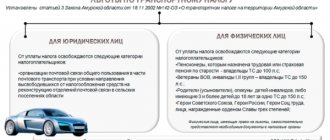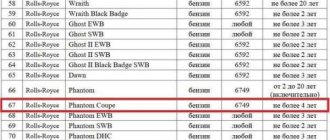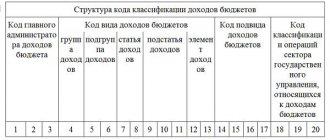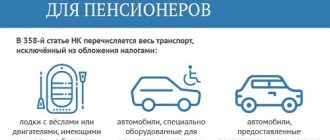What is transport tax, the calculation procedure, benefits at the federal and local level, methods of paying and checking the tax, whether pensioners should pay car tax - we have prepared all this information for you in an accessible form.
Transport tax (TN) is required to be paid not only by ordinary owners of cars and motorcycles, but also by organizations whose balance sheet includes vehicles registered with the State Traffic Safety Inspectorate. Owners of river and sea vessels, aircraft and large quadcopters also annually replenish the state treasury.
Transport tax - what is it?
Transport tax is a regional tax
, which is regulated by Chapter 28 of the Tax Code of the Russian Federation. The Tax Code of the Russian Federation spells out the basic rules governing the object of taxation, tax payers, calculation and payment rules.
That is, the basic conditions are prescribed at the federal level, but regional authorities have the right to make their own adjustments. Important: regional authorities cannot worsen the rights of taxpayers. In addition, regions set tax rates and preferential categories of payers.
Federal taxes and fees
In accordance with Art.
12 of the Tax Code of the Russian Federation, federal taxes and fees are such obligatory payments, the transfer of which must be carried out everywhere on the territory of the Russian Federation. At the same time, the effect of federal tax standards is regulated only by the Tax Code of the Russian Federation, which introduces and repeals both the taxes themselves and individual provisions for a particular federal tax. The amounts of federal taxes go to the budget of the same name of the Russian Federation.
The materials in this section will tell you about the procedure for applying the BCC for various taxes..
And the procedure for making an error in the KBK is discussed in detail by ConsultantPlus experts. Get free access to the system and go to the Ready-made solution.
Who is the tax payer?
Both citizens and legal entities are required to pay transport tax
. But in our article we will talk specifically about individuals. The person in whose name the corresponding vehicle is registered must pay the transport tax.
It is worth noting that a minor child can also be a transport tax payer. For example, if a child received a car as a gift from a relative (and legislation in Russia does not prohibit this). In this case, the transport tax must be paid by the parent of the minor child.
.
Taxes and special regimes
In addition to the previously discussed groups of taxes, the Tax Code of the Russian Federation identifies so-called special regimes, the use of which exempts from payment of income tax, personal income tax (for individual entrepreneurs), VAT, property tax of organizations and individuals, but introduces the obligation to pay a single tax.
Recommendations from ConsultantPlus experts will help you choose the optimal tax regime. You can view them by getting free trial access to the K+ system.
The following modes are distinguished:
- simplified tax system;
Read about the specifics of calculating and paying this tax in the “STS” section.
- regime for agricultural producers;
For materials on calculation, payment and reporting in this mode, see the “Unified Agricultural Tax” section.
- production sharing agreement;
- patent system.
The nuances of the patent taxation system can be found in the “PSN” section.
Let's look at the types of taxes and fees in the Russian Federation.
What is the object of taxation
Object
taxation are:
- cars;
- motorcycles;
- self-propelled machines and vehicles on pneumatic and caterpillar tracks;
- snowmobiles and motor sleighs;
- air transport (planes and helicopters);
- marine vehicles (motor ships, boats, yachts and jet skis).
But there are exceptions
, which include:
- passenger cars with engine power up to 100 horsepower (purchased through the social security department);
- cars equipped for disabled people;
- tractors, self-propelled combines and special vehicles for transporting milk, poultry, which are used for agriculture (for individual entrepreneurs);
- fishing vessels (for individual entrepreneurs).
Tax is not calculated for these vehicles
.
Transport tax rates
Transport tax rates are set by regional authorities
. However, Article 361 of the Tax Code of the Russian Federation indicates approximate values of transport tax, which regions have the right to reduce or increase by no more than 10 times, with the exception of cars with an engine power of up to 150 hp.
The main criterion for determining the tax rate is engine power. In addition, regional authorities have the right to set additional tax rates depending on the environmental class of the vehicle and the number of years of use.
For example, let’s take transport tax rates in Moscow
, approved by the Moscow Law of July 9, 2008 No. 33 “On Transport Tax”:
- engine power up to 100 hp (up to 73.55 kW) inclusive – 12 rubles/hp;
- over 100 hp up to 125 hp (over 73.55 kW to 91.94 kW) inclusive – 25 rub./hp;
- over 125 hp up to 150 hp (over 91.94 kW to 110.33 kW) inclusive – 35 rub./hp;
- over 150 hp up to 175 hp (over 110.33 kW to 128.7 kW) inclusive – 45 rub./hp;
- over 175 hp up to 200 hp (over 128.7 kW to 147.1 kW) inclusive – 50 rub./hp;
- over 200 hp up to 225 hp (over 147.1 kW to 165.5 kW) inclusive – 65 rub./hp;
- over 225 hp up to 250 hp (over 165.5 kW to 183.9 kW) inclusive – 75 rub./hp;
- over 250 hp (over 183.9 kW) – 150 rub./hp.
, an increasing factor is applied to expensive cars
- 1.1 – for cars worth from 3 to 5 million rubles inclusive, no more than three years have passed since the year of manufacture;
- 2 – for cars worth from 5 to 10 million rubles inclusive, no more than five years have passed since the year of manufacture;
- 3 - for cars costing from 10 to 15 million rubles inclusive, no more than 10 years have passed since the year of manufacture, and costing from 15 million rubles, no more than 20 years have passed since the year of manufacture.
Every year the Ministry of Industry and Trade determines a list of cars whose cost exceeds 3 million rubles
, and publishes it on its official website before March 1 of each year.
The list of expensive cars in 2021 can be found here.
How to calculate the number of complete months of car ownership?
If a vehicle is delivered or deregistered during the year, then the transport tax is calculated with a certain coefficient. This coefficient is defined as the ratio of the number of complete months during which a given vehicle was registered to the number of calendar months in a year (12).
The procedure for determining the number of full months of car ownership is calculated in accordance with paragraph 3 of Art. 362 of the Tax Code of the Russian Federation. Month of registration
It is considered complete if the vehicle
is registered
before the 15th day inclusive.
The month of deregistration is considered complete if the car is deregistered
after the 15th day. For example, if a car was registered after the 15th, then this month is not complete and is not taken into account when calculating the car tax.
Tax benefits
Transport tax benefits are established by regional regulations. In most cases, the following are exempt from paying transport tax:
- disabled people of groups I and II;
- WWII veterans;
- Heroes of the Soviet Union, Heroes of the Russian Federation, Russians awarded the Order of Glory of three degrees;
- combat veterans;
- one of the parents of a disabled child.
Some regions provide benefits
and other categories of people:
- one of the parents of a large family;
- Chernobyl victims;
- people who participated in the liquidation of nuclear accidents or in testing nuclear weapons.
However, each region has its own preferential categories of taxpayers
. More detailed information about all the benefits provided can be found at the local Federal Tax Service inspectorate.
It is worth noting that benefits for the above categories of people are provided only for 1 car, which is chosen by the payer himself. To provide a benefit, you must write to the Federal Tax Service an application about the selected preferential object of taxation and attach a document confirming the benefit.
If the beneficiary belongs to several categories
payers who are exempt from transport tax, he has the right to take advantage of only one benefit in relation to one vehicle.
Some regions establish criteria not only for the tax payer, but also for the vehicle
. For example, in Moscow, a transport tax benefit can only be issued for a car with an engine power of no more than 200 horsepower. The only exception is a car that belongs to one of the parents of a large family (but there are no restrictions on the power of the car).
The Moscow authorities also exempted owners of electric vehicles from paying transport tax.
Calculation examples
To make it easier for you to make calculations related to transport taxes yourself, we will give you a few examples.
Imagine that you own a car with an engine power of 140 horsepower. Let us assume that the rate relevant for the subject of the country in which the vehicle was registered is 3.5. You are the sole owner of the car. The period of ownership of the object is a calendar year.
The formula will look like this: 140 * 3.5 = 490. The final value will be the very amount of tax collection that the state expects you to receive.
If, at the time of determining the tax amount, the vehicle had not been in your possession for a full year, but only for seven months, the formula would have been as follows: 140 * 3.5 * (7:12) = 140 * 3.5 * 0.58 = 284 units of Russian currency.
Now let’s imagine that the cost of your car classifies it as a “luxury” vehicle, amounting to three and a half million rubles. Moreover, only four months have passed since its release. Then the calculation would look like this: 140 * 3.5 * 1.5 = 735 Russian rubles.
If your car was owned for only two months, and its price was 6 million Russian rubles, while the engine power was the same 140 “horses,” the calculation would be made as follows: 140 * (2:12) * 3, 5*2 = 166 rubles 6 kopecks.
Now let's consider the situation with a car with more power, and apply the general tax rate to it. Let's imagine that you own a car with an engine power of 270 horsepower, and the ownership period is a full 12 months. Then the value is calculated as follows: 270 * 15 = 4 thousand 50 Russian rubles.
If the car had been owned for 7 months less, the formula would have taken the form: 270 * 15 * 0.42 = 1 thousand 701 Russian rubles.
When a car with the required power is owned for a whole year, and its cost reaches 4 million, while only two and a half year periods have passed since the year of its production, the tax amount is calculated as follows: 270 * 15 * 1.1 = 4 thousand 455 rubles .
If the cost of the same car is raised to 12 million, provided that you have owned it for only six months, you need to calculate the tax according to the presented ratio: 170 * 15 * 0.5 * 3 = 6 thousand 75 rubles.
Above, you were presented with examples of calculating the amount of tax collection on cars. Now let's look at several problems in which the vehicle will be a motorcycle. Let's take the general tax rate.
You are the proud owner of a motorcycle, the ownership period of which is a full year. The power of the unit is 40 horsepower. The calculation formula is very simple: 40 * 5 = 200 units of Russian currency. If the period of ownership of the “iron horse” was only nine months, then the ratio of this period to a full year must be added to the required formula, that is, in fact, it must be multiplied by 0.75 (9:12). The result will be an amount equal to 150 rubles.
Note! The price of a motor vehicle is not a basis for changing the rate by adding an increasing factor to it.
Now let's try to give an example of calculating the transport tax for a bus. Let's imagine that the engine power of such a car is 300 horsepower. Let's take the rates from the general category. Let's assume you own this bus for a full year. Then the calculation will look like this: 300*10= 3 thousand Russian rubles.
If the period of ownership of the bus was only 8 months, then we add to the formula the ratio of this period to a full year, that is, 0.67 (8:12), multiply the indicators among themselves and get a value equal to 2 thousand 10 rubles.
As in the case of motorized transport, the price at which the bus was purchased is not the basis for changing the rate established by the Tax Code or other legislative act
Video - Calculation of transport tax
How is the transport tax calculated?
The vehicle owner does not have to calculate the amount of transport tax on his own
, this is the responsibility of the tax service. It is the Federal Tax Service, based on data received from the traffic police, that calculates the amount of tax and sends a notification about the amount of transport tax and the timing of its payment to the address of the owner of the vehicle.
The tax notice must be sent no later than 30 days before the tax payment deadline, that is, November 1. However, most often, tax notices are sent to payers' addresses in August-September.
The tax amount is paid in full rubles
. If, when calculating the transport tax, the amount turned out to be in kopecks, then 50 kopecks or more is rounded up to 1 ruble, and less than 50 kopecks is not taken into account at all.
It is worth noting that in the notification for payment of transport tax, calculations can be made for a period not exceeding three years
.
The payer has the right to check the correctness of the calculation independently. If the Federal Tax Service specialists made an error in the calculation - for example, they did not take into account the benefit or calculated the tax at a different rate, then the payer needs to contact the Federal Tax Service with an application for recalculation and documents confirming the error.
After fixing the error
, Federal Tax Service specialists will send a new tax notice to the owner of the vehicle indicating the corrected amount.
Check for correctness
Transport tax can be calculated using an online calculator located on the Federal Tax Service website. Before making the calculation, you should select the region in which the vehicle was registered in the lower right corner.
The calculation of the amount of tax paid is presented in sufficient detail in your personal account on the website of the Federal Tax Service:
By selecting your car, you can see the tax calculation parameters in detail:
List of federal, regional and local taxes in 2021 (table)
| Type of tax | Tax | Taxpayers | An object | Rates |
| Federal taxes | VAT The “VAT” section will help you understand the complex issues that arise when calculating, paying and reporting on this tax. | Art. 143 | Art. 146 | Art. 164 |
| Excise taxes Find answers to questions about what goods are excisable, what are the tax rates, and how to fill out a declaration in the “Excise Taxes” section. | Art. 179 | Art. 182 | Art. 193 | |
| Personal income tax How to calculate and withhold personal income tax, what deductions and benefits apply, how to prepare reports, see the “personal income tax” section | Art. 207 | Art. 209 | Art. 224 | |
| Income tax In the “Income Tax” section you can find all the news on the calculation, payment and submission of returns for this tax | Art. 246 | Art. 247 | Art. 284 | |
| Fees for the use of fauna and for the use of aquatic biological resources | Art. 333.1 | Art. 333.2 | Art. 333.3 | |
| Mineral extraction tax | Art. 334 | Art. 336 | Art. 342 | |
| Water tax In the materials of the “Water Tax” section, look for information about the list of objects of taxation, the nuances of calculating and paying the tax, as well as the timing of its transfer and rates | Art. 333.8 | Art. 333.9 | Art. 333.12 | |
| State duty | Art. 333.17 | Art. 336.16 | Art. 333.19, 333.21, 333.23, 333.24, 333.26, 333.28, 333.30, 333.31, 333.32.1, 333.32.2, 333.32.3, 333.33 | |
| Regional taxes | Organizational property tax You can read about the nuances of calculating property tax by organizations in the “Property Tax” section. | Art. 373 | Art. 374 | Art. 380 |
| Transport tax You will learn about the calculation procedure, possible benefits, and deadlines for paying transport tax from the materials in our special section “Transport Tax” | Art. 357 | Art. 358 | Art. 361 | |
| Gambling tax The specifics of calculating this tax are discussed in the section “Gaming Business Tax” | Art. 365 | Art. 366 | Art. 369 | |
| Local taxes | Property tax for individuals | Art. 400 | Art. 401 | Art. 406 |
| Land tax What it consists of, who should calculate and pay it, read in the materials of the section of the same name | Art. 388 | Art. 389 | Art. 394 | |
| Trade fee | Art. 411 | Art. 412 | Art. 415 |
Transport tax 2021: will it be canceled or not?
Since mid-summer, a lot of information has been periodically published on the Internet that the transport tax will be abolished in 2021. And car owners, reading such articles, mislead themselves.
In fact, State Duma deputy A.V. Baryshev introduced a bill for consideration
No. 1010832, according to which it was proposed to abolish the transport tax, that is, to exclude Chapter 28 from the Tax Code.
But on September 14, 2021, the bill was moved to the archive due to the lack of a conclusion from the Government of the Russian Federation. That is, the draft law was rejected without even passing the first reading. As a result, the transport tax will not be abolished in 2021
.
Calculation example for a passenger car
In order to calculate the transport tax for a passenger car, use the following formula:
The established tax rate x the vehicle capacity x the period during which the taxpayer owns the vehicle.
For example, you can take a Russian-made passenger car, purchased by the owner in March 2013 and deregistered in September of the same year.
It turns out that the citizen was the owner of the vehicle for only seven months. The vehicle's power rating is set at eighty-nine horsepower.
The tax rate established in the region of registration of the taxpayer is thirteen rubles. From the above data you can calculate the transport tax:
13 rubles x 89 horsepower x 7/12 months = 674.9 rubles
Today, every car owner will be able to calculate the tax on a vehicle using numerous online calculators.
In addition to such sites, vehicle owners will be able to see the amount of duty on the vehicle using the official portal of the Federal Tax Service.
Knowing all the information and performance of the car, the owner will be able to calculate the duty independently. The only information that needs to be obtained when calculating is the regional tax rate.
Indeed, depending on the region in which the vehicle was registered, a certain tax rate is established when calculating the transport duty.
The increasing coefficient for transport tax in 2021 is described in the article: increasing coefficient for transport tax in 2020. Do disabled people of group 1 pay transport tax, read here.










